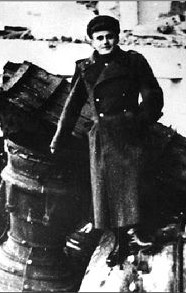 As we spend today celebrating the 30th anniversary of mankind’s first visit to the Moon, it’s worth noting that America’s space-race triumph was far from pre-ordained. In fact, the smart money circa 1963 would have been on the Soviets reaching the goal first, due to the seldom recognized genius of Sergei Korolev. The man responsible for such feats as Laika’s orbiting and the underrated Venera 3 mission, Korolev once seemed well on his way to getting a Russian to alight on the Moon before NASA got its act together. But the Soviets’ lack of teamwork helped doom his dreams:
As we spend today celebrating the 30th anniversary of mankind’s first visit to the Moon, it’s worth noting that America’s space-race triumph was far from pre-ordained. In fact, the smart money circa 1963 would have been on the Soviets reaching the goal first, due to the seldom recognized genius of Sergei Korolev. The man responsible for such feats as Laika’s orbiting and the underrated Venera 3 mission, Korolev once seemed well on his way to getting a Russian to alight on the Moon before NASA got its act together. But the Soviets’ lack of teamwork helped doom his dreams:
[Korolev] had to deal with competition from rival designers—Valentin Glushko, the rocket engine designer who had defected from Korolev’s team to join Vladimir Chelomei; and another team headed by his former colleague, Mikhail Yangel. Glushko had refused to design the oxygen–kerosene engines that Korolev preferred and so another engine firm, experienced mostly with aircraft engines, had to be relied on.
The subsequent design called for 24 engines in the first stage, later expanded to 30 when it became clear that the vehicle would be unable to lift the huge lunar payload, laden with bulky, relatively primitive electronics. With constant opposition from the tunnel–visioned military, preoccupied with weapons, he never got the funds to statictest his engines as a system, and this failure would prove fatal.
The whole Korolev history is highly recommended, if only to marvel at his transition from gulag inmate to father of the Soviet space program. His legacy lives on in the engineering corporation that bears his name, and which is heavily involved with the maintenance of the International Space Station.


Like gas stations in rural Texas after 10 pm, comments are closed.